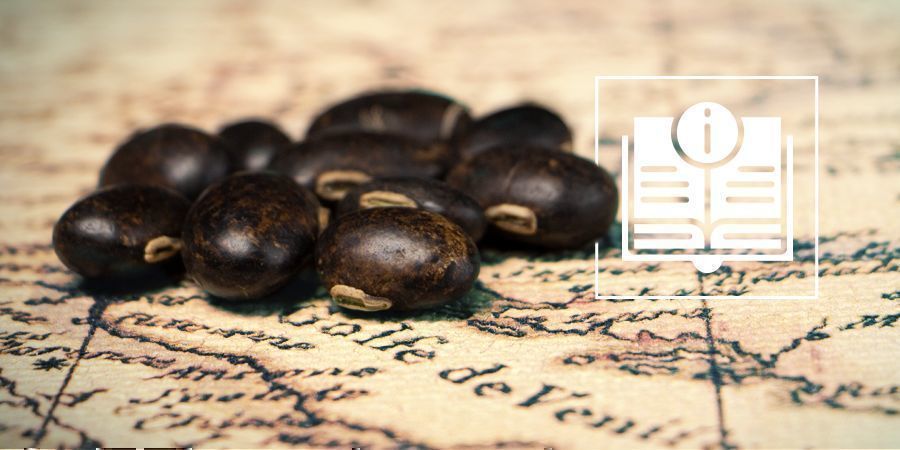-
Seedshop
-
Feminized
Cannabis seeds -
Autoflowering
Cannabis Seeds -
Regular
Cannabis Seeds -
F1 Hybrid
Cannabis Seeds -
CBD
Cannabis Seeds -
Zamnesia
Cannabis Seeds
-
Top 10’s
- Top 10 Feminized Seeds
- Top 10 Autoflowering Seeds
- Top 10 Regular Seeds
- Top 10 USA Cannabis Strains
-
Favourites
- Beginner Strains
- Below 1% THC
- Classic Cannabis Strains
- Cup Winners
- F1 Hybrids
- Fast Flowering Seeds
- High CBD Strains
- High THC Strains
- Mix Packs
- Zamnesia Exclusive Collabs
-
-
Headshop
-
Vaporshop
- Spare Parts & Accessories
- AirVape XS GO (2021)
- Arizer Air MAX
- Arizer Extreme Q
- Arizer Solo 2
- Arizer V-Tower
- Arizer XQ2
- Boundless CFC 2.0 Vaporizer
- Boundless CFX
- Boundless TERA (V3)
- CRAFTY+
- DaVinci IQC
- Dr. Dabber Boost EVO
- DynaVap VapCap "M" PLUS 2023
- DynaVap VonG (i) Titanium
- Flowermate Aura
- Flowermate Cap Pro
- Flowermate Slick
- Flowermate V5.0S Pro
-
Healthshop
-
Smartshop
-
Shroomshop
-
Growshop
-
Seedshop
All CategoriesSeedshop
- Autoflower Seeds
- Feminized Cannabis Seeds
- Zamnesia Seeds
- Zamnesia's Top 10
- CBD Seeds
- F1 Hybrids
- Seed Banks
- Mix Packs
-
Popular Strain Types
- Zamnesia Exclusive Collabs
- Classic Cannabis Strains
- Amnesia Seeds
- Haze Seeds
- Skunk Seeds
- Kush Seeds
- Purple Seeds
- Blueberry Seeds
- Cheese Seeds
- Diesel Seeds
- White Widow Seeds
- Gorilla Seeds
- Northern Lights Seeds
- Granddaddy Purple Seeds
- OG Kush Seeds
- Blue Dream Seeds
- Lemon Haze Seeds
- Bruce Banner Seeds
- Gelato Seeds
- Sour Diesel Seeds
- Jack Herer Seeds
- Girl Scout Cookies Seeds (GSC)
- Wedding Cake Seeds
- Zkittlez Seeds
- Pineapple Express Seeds
- Chemdawg Seeds
- Hindu Kush Seeds
- Mimosa Seeds
- F1 Hybrids
- Mix Packs
- Cup Winners
- Beginner Strains
- High THC Strains
- Fast Flowering Seeds
- Regular Cannabis Seeds
- USA Cannabis Strains
- Cup Winners
- Seedfinder
-
Vaporshop
All CategoriesVaporshop
- Top 10 Vaporizers
- Spare Parts & Accessories
- AirVape XS GO (2021)
- Arizer Air MAX
- Arizer Extreme Q
- Arizer Solo 2
- Arizer V-Tower
- Arizer XQ2
- Boundless CFC 2.0 Vaporizer
- Boundless CFX
- Boundless TERA (V3)
- CRAFTY+
- DaVinci IQC
- Dr. Dabber Boost EVO
- DynaVap VapCap "M" PLUS 2023
- DynaVap VonG (i) Titanium
- Flowermate Aura
- Flowermate Cap Pro
- Flowermate Slick
- Flowermate V5.0S Pro
- G Pen Elite II
- G Pen Micro+
- G Pen Roam
- Hyer Big-E Rig
- MIGHTY+
- PAX Mini
- PAX Plus
- PLENTY
- Puffco Peak Smart Rig
- Puffco Plus
- Storm Vaporizer
- The Proxy (Puffco)
- VOLCANO CLASSIC
- VOLCANO HYBRID
- Vapman 2.0
- Vapman Click
-
Smartshop
All CategoriesSmartshop
- Top 10 Smartshop
- Zamnesia Gift Cards
- After Party
- Aphrodisiacs
- Aromatherapy
- Blue Lotus
- CBD Vape Juice
- Capsule Machines
- Crystals, Gemstones & Minerals
- Dream Herbs
- Drug Tests
- Extracts
- Happy Caps
- Herbal Tea
- Herbs & Seeds
- Incense
- Kanna
- Kratom
- LSA Seeds
- Mescaline Cacti
- Microdosing
- Nootropics
- Relaxing
- Salvia divinorum
- Smart Seeds
- Stimulants
- Supplements
- Tinctures
- Vape Herbs
-
TRIBE
All CategoriesTRIBE
- My Membership
- Spend Gift Points
- TRIBE Sale
- Exclusive products
- Earn Extra Gift Points
-
TRIBE
- Early Access
- Refer a Friend
- Information
-
TRIBE
-
Language
 United States
United States
Friday, 02 January and Thursday, 08 January 2026*
Velvet Beans: Everything You Need To Know
Velvet bean has long been used as a powerful nootropic and mood-booster. Find out everything about Mucuna pruriens!
Long used in traditional Asian and African practices, velvet bean (Mucuna pruriens) is believed to exert extraordinary effects in humans. It contains a naturally occurring precursor to dopamine, which is a “happy hormone” that plays an important role in cognitive function, emotion, and mood.
WHAT IS MUCUNA PRURIENS?
Mucuna pruriens is a tropical plant native to Africa and Asia. Other names for it include Bengal velvet bean, Florida velvet bean, Mauritius velvet bean, Lyon bean, cowage, or cowitch.
Velvet bean belongs to a group of plants known as adaptogens, which are non-toxic herbs thought to support various physiological processes. In traditional Ayurveda, velvet bean is used holistically for the body and mind. Taken as an herbal supplement, it may promote focus, relaxation, and a good mood.
VELVET BEAN: BOTANICAL INFORMATION
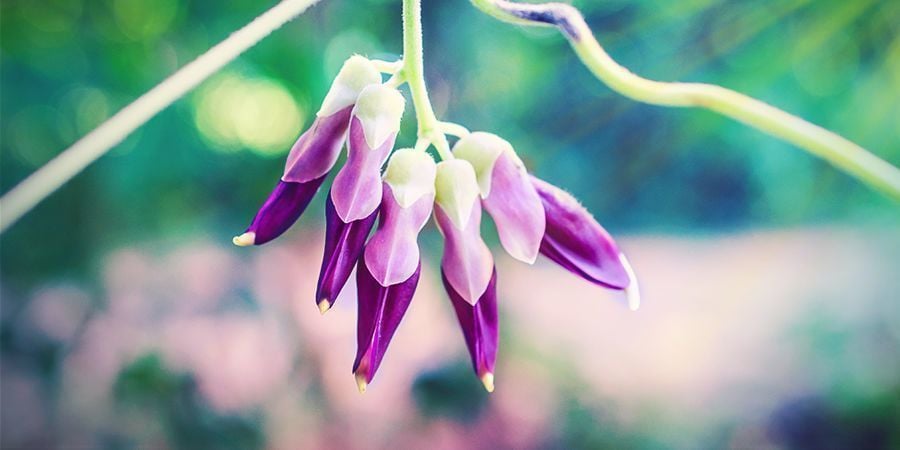
Velvet bean is a tropical legume, which is the seed (or fruit) of a plant—just like peas or beans. Originally from southern China and eastern India, it is widely cultivated in Africa and Asia, where it grows in sandy soils and requires a long growing season.
Velvet bean bears white, lavender, or purple flowers and develops seed pods up to 15cm long with 3 to 6 seeds per pod. The pods are covered in orange, bristle-like hairs that cause severe itch if they come into contact with skin; this is why the plant also has the nickname “cowitch”.
ACTIVE INGREDIENTS AND EFFECTS
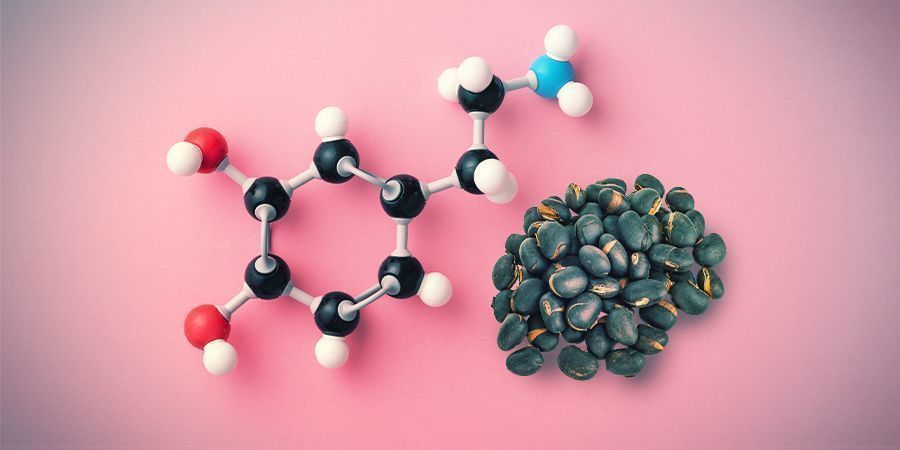
The most significant compound in Mucuna pruriens is ʟ-DOPA, an amino acid needed by the brain to produce dopamine, a hormone and neurotransmitter that plays an important role in motivation, pleasure, and emotions. If the body can’t produce sufficient dopamine, this can lead to lethargy, learning difficulties, and an inability to focus. Research has shown that taking velvet bean as a supplement can boost dopamine levels in humans.
Others can also benefit from taking Mucuna pruriens: ʟ-DOPA is thought to act as a natural nootropic to improve cognitive function, memory, creativity, and motivation. With its energising and mood-boosting properties, velvet bean is also an effective natural aphrodisiac.
BENEFITS OF VELVET BEAN
Dopamine is a vital chemical messenger in our brain. Along with hormones such as serotonin and oestrogen, it is sometimes referred to as a “happy hormone”.
When velvet bean is taken as a supplement, it has been shown to increase dopamine concentrations in the nervous system and the brain—with various beneficial effects.
RELAXATION AND MOOD

In a study published in 2014, researchers looked to see if Mucuna pruriens was capable of promoting relaxation in rats through a series of tension-inducing tests. Using different experimental models with different means of administration, the researchers found Mucuna pruriens extract to exhibit a significant positive effect.
There is also evidence that velvet bean can prove beneficial for the mood. When researchers administered Mucuna pruriens to mice put through a series of tests, they found it to increase activity and reduce immobility levels in a way comparable to accepted and more common methods.
COGNITIVE FUNCTION AND LEARNING

In various cultures, and for at least 2,000 years, Mucuna pruriens has been used as a natural mental energiser for improved clarity, focus, and reaction time. Here too, science is now catching up to what humans have known for a long time already.
In one related study, researchers gave eight young adults single 200mg doses of ʟ-DOPA before assessing their reaction time in a test. The scientists found that reaction time, as well as motor time, of the subjects who received ʟ-DOPA was shorter when compared to the placebo group.
Studies have also been performed to see whether ʟ-DOPA can enhance learning capabilities. In a double-blind, placebo-controlled study published in 2015, a group of participants received 100mg of ʟ-DOPA, while another group received a placebo.
The ʟ-DOPA group showed “superior recall accuracy for new words over five learning sessions compared with the placebo group”, suggesting that “dopamine boosts initial lexical acquisition and enhances longer-term consolidation of words learnt with semantic information, consistent with dopaminergic enhancement of semantic salience”.
Based on these results, there is indeed strong evidence for the nootropic, brain-enhancing potential of velvet bean.
AS AN APHRODISIAC

As for the purported benefits of taking velvet bean to support a healthy sex drive, many users have said that Mucuna pruriens puts them in ‘the mood for love.' It is also suggested that taking it in combination with Passiflora incarnata (passion flower) will boost and enhance velvet bean's lust-inducing qualities.
TRADITIONAL USE
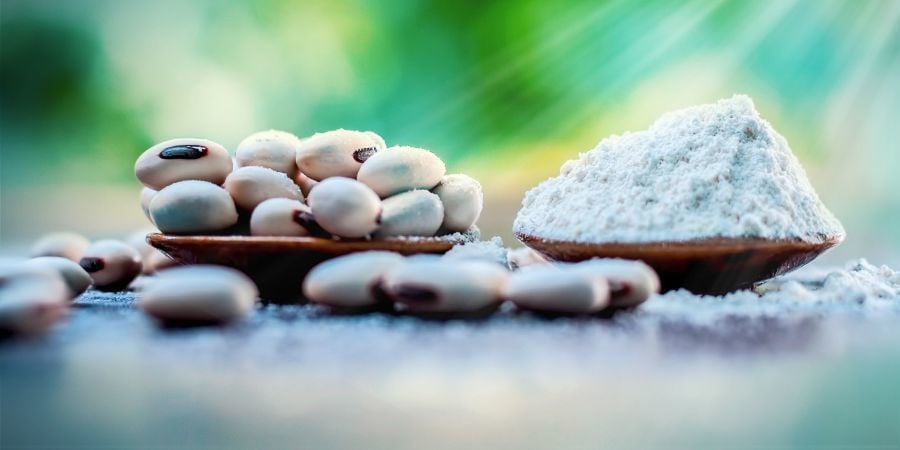
In Asian and African cultures, velvet bean is valued as a traditional superfood and holistic herb. In the Himalayas and Mauritius, pods and beans from the plant are boiled and served as food. In Guatemala and Mexico, velvet beans are roasted and ground, then brewed into a coffee-like beverage.
In traditional Ayurveda, velvet bean is an important substance that helps to balance the three Ayurvedic states: vata, pitta, and kapha, which energise and nourish the body and mind. Velvet bean is widely used to boost the mood, grow muscle mass, support restful sleep, promote digestion, and for many other purposes.
GROWING MUCUNA PRURIENS
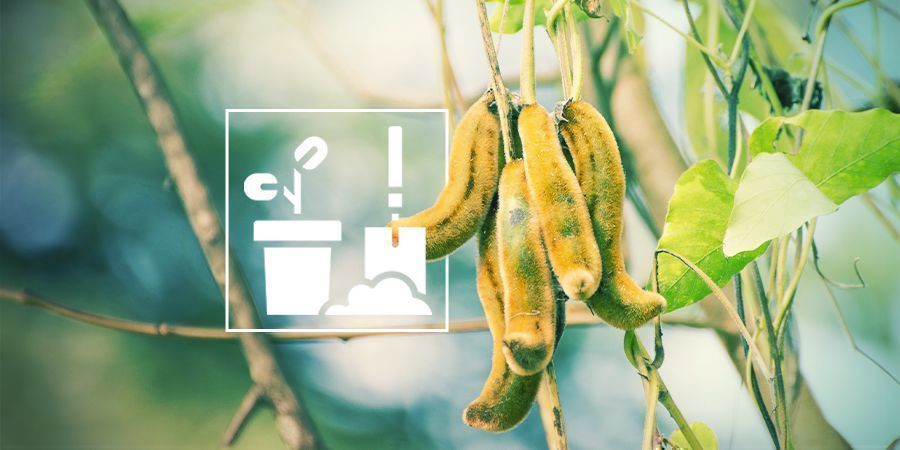
Mucuna pruriens is a low-maintenance plant, and you can grow it easily at home. It is recommended to plant it out in spring or summer once there is no chance of frost and soil temperature is at least 18°C. Plant the seeds in well-draining soil about 1–5cm deep.
Plants need few, if any, additional nutrients as they can take all they need from the existing soil. You can, however, add phosphorus, which the plant will respond well to. Grown in good conditions, the vines of velvet bean can get very tall, up to a 4–5m, and they can easily overgrow other plants, so keep that in mind. Their root system can grow even larger.
If you want to harvest fresh pods, they are ready when the beans inside have filled out nicely but the pods haven’t yet dried out. If you want the seeds, such as for making powders or beverages, you can just leave the pods to dry on the vine and harvest them when they are hard.
Be careful when harvesting! Although some garden varieties of velvet bean are now available without the itching bristles, many varieties do have the irritating hairs, which you don’t want to get anywhere near your bare skin. If you’re growing these varieties, make sure to use gloves for harvesting and ensure that children and pets can’t get near the plants!
HOW TO USE VELVET BEAN

The seeds and leaves of velvet bean have nootropic properties, and you can use them to make powders and extracts. There are several ways you can use your velvet beans.
Put fresh green pods into a pot with water, add salt, and boil until the pods are soft and start to split open. Do not eat the husks as they contain a toxin and could make you sick! But the seeds inside will be nice and soft and have a pleasant, nutty taste.
If you want to dry your velvet beans, just leave the pods on the plant and harvest when they are hard. Afterwards, you can roast and grind them just like coffee beans. You can use the ground beans to make a delicious coffee-like beverage.
Powder made from the roasted beans is a particularly convenient way to take velvet bean as a supplement. Just mix some powder with some water, juice, or yoghurt, but do not exceed the maximum recommended daily dosage of 5g (1 tsp.).

- (n.d.). - https://www.researchgate.net
- (n.d.). - https://www.researchgate.net
- Digvijay G. Rana, & Varsha J. Galani. (Jan-Mar 2014). Dopamine mediated antidepressant effect of Mucuna pruriens seeds in various experimental models of depression - https://www.ncbi.nlm.nih.gov
- J M Rabey, Y Vered, H Shabtai, E Graff, & A D Korczyn. (1992, August). Improvement of parkinsonian features correlate with high plasma levodopa values after broad bean (Vicia faba) consumption. - https://www.ncbi.nlm.nih.gov
- Shellshear L, MacDonald AD, Mahoney J, Finch E, McMahon K, Silburn P, Nathan PJ, & Copland DA. (2015 Sep). Levodopa enhances explicit new-word learning in healthy adults: a preliminary study. - PubMed - NCBI - https://www.ncbi.nlm.nih.gov
- France
- Germany
- International
- Italy
- Netherlands
- Polska
- Portugal
- Spain
- United Kingdom
- United States
You might also like
-
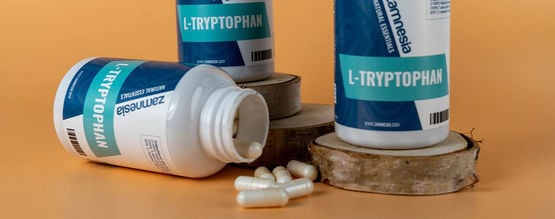
 5 min
23 January 2023
What You Need To Know About Tryptophan
Tryptophan is an essential amino acid that our body receives from food or supplements. According to preliminary research, boosting your intake of tryptophan could come with a variety of benefits to we ...
5 min
23 January 2023
What You Need To Know About Tryptophan
Tryptophan is an essential amino acid that our body receives from food or supplements. According to preliminary research, boosting your intake of tryptophan could come with a variety of benefits to we ...
-
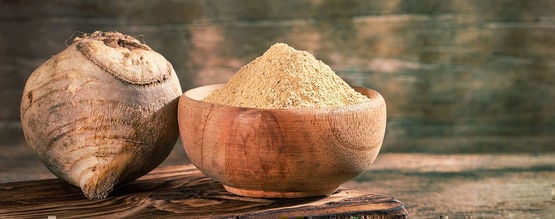
 4 min
29 September 2022
Everything You Need To Know About Maca Root
Heard about maca's unique potential to improve sex drive, energy level, and cognitive function? In this article, we take an in-depth look at Peruvian maca root, its rich cultural history, potential he ...
4 min
29 September 2022
Everything You Need To Know About Maca Root
Heard about maca's unique potential to improve sex drive, energy level, and cognitive function? In this article, we take an in-depth look at Peruvian maca root, its rich cultural history, potential he ...
-

 4 min
19 August 2022
7 Natural Aphrodisiacs For Women
Sometimes our sex drive needs a little boost. And if we can do so using natural substances, that's all the better. Here we look at 7 natural aphrodisiacs that may help women to increase their libidos. ...
4 min
19 August 2022
7 Natural Aphrodisiacs For Women
Sometimes our sex drive needs a little boost. And if we can do so using natural substances, that's all the better. Here we look at 7 natural aphrodisiacs that may help women to increase their libidos. ...
-
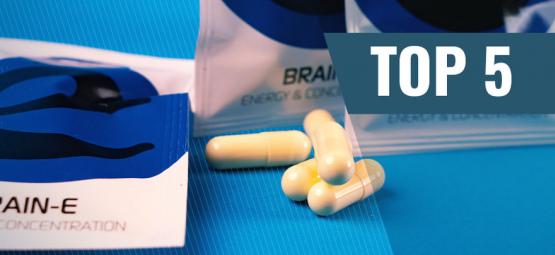
 4 min
31 August 2017
5 Drugs That May Boost Focus, Enhance Concentration And Help You Study
Tired of sitting down at your work desk only to find your boredom levels increase and your attention drift off into some distant corner of the internet? Well, this list of drugs may be able to help co ...
4 min
31 August 2017
5 Drugs That May Boost Focus, Enhance Concentration And Help You Study
Tired of sitting down at your work desk only to find your boredom levels increase and your attention drift off into some distant corner of the internet? Well, this list of drugs may be able to help co ...
-

 2 min
22 January 2014
Top 5 Rainforest Aphrodisiacs
Natural aphrodisiacs have been used around the world for thousands of years to help kindle the fires of love for both men and women. Find out about our Top 5 Aphrodisiacs from the Amazonian rainforest ...
2 min
22 January 2014
Top 5 Rainforest Aphrodisiacs
Natural aphrodisiacs have been used around the world for thousands of years to help kindle the fires of love for both men and women. Find out about our Top 5 Aphrodisiacs from the Amazonian rainforest ...
Categories
-
Seedshop
- Feminized Cannabis Seeds
- Autoflower Seeds
- Regular Cannabis Seeds
- F1 Hybrids
- CBD Seeds
- Zamnesia Seeds
- Top 10 Autoflowering Seeds
- Top 10 Regular Seeds
- Top 10 USA Cannabis Strains
- Top 10 Feminized Seeds
- Beginner Strains
- Below 1% THC
- Classic Cannabis Strains
- Cup Winners
- F1 Hybrids
- Fast Flowering Seeds
- High CBD Strains
- High THC Strains
- Mix Packs
- Zamnesia Exclusive Collabs
- Amnesia Seeds
- Blueberry Seeds
- Cheese Seeds
- Diesel Seeds
- Gorilla Seeds
- Haze Seeds
- Kush Seeds
- Purple Seeds
- Skunk Seeds
- White Widow Seeds
- Northern Lights Seeds
- Granddaddy Purple Seeds
- OG Kush Seeds
- Blue Dream Seeds
- Lemon Haze Seeds
- Bruce Banner Seeds
- Gelato Seeds
- Sour Diesel Seeds
- Jack Herer Seeds
- Girl Scout Cookies Seeds (GSC)
- Wedding Cake Seeds
- Zkittlez Seeds
- Pineapple Express Seeds
- Chemdawg Seeds
- Hindu Kush Seeds
- Mimosa Seeds
- Zamnesia Seeds
- ACE Seeds
- Advanced Seeds
- Afghan Seed Connection
- Amsterdam Genetics
- Anesia Seeds
- Auto Seeds
- Barney's Farm
- Big Buddha Seeds
- Blimburn Seeds
- Bomb Seeds
- BSB Genetics
- BSF Seeds
- Buddha Seeds
- The Cali Connection Seeds
- CBD Seeds
- Compound Genetics
- Cookies Seed Bank
- Delicious Seeds
- DNA Genetics
- Doctor's Choice
- Dr. Underground
- Dutch Passion
- Elite Seeds
- Eva Seeds
- Exotic Seed
- Expert Seeds
- FastBuds
- Female Seeds
- French Touch Seeds
- Garden of Green
- GeneSeeds
- Genehtik Seeds
- G13 Labs
- Grass-O-Matic
- Greenhouse Seeds
- Growers Choice
- Humboldt Seed Company
- Humboldt Seed Organization
- Kalashnikov Seeds
- Kannabia
- The Kush Brothers
- Light Buds
- Little Chief Collabs
- Medical Seeds
- Ministry of Cannabis
- Mr. Nice
- Nirvana Seeds
- Original Sensible
- Paradise Seeds
- Perfect Tree
- Pheno Finder
- Philosopher Seeds
- Positronics Seeds
- Purple City Genetics
- Pyramid Seeds
- Rare Dankness
- Reggae Seeds
- Resin Seeds
- Ripper Seeds
- Royal Queen Seeds
- Sagarmatha Seeds
- Samsara Seeds
- Seedstockers
- Sensation Seeds
- Sensi Seeds
- Serious Seeds
- Silent Seeds
- Solfire Gardens
- Soma Seeds
- Spliff Seeds
- Strain Hunters
- Sumo Seeds
- Super Sativa Seed Club
- Super Strains
- Sweet Seeds
- TICAL
- T.H. Seeds
- Top Tao Seeds
- Vision Seeds
- VIP Seeds
- White Label
- World Of Seeds
- Seed Banks
-
Headshop
-
Vaporshop
-
Healthshop
-
Smartshop
- Top 10 Smartshop
- Kratom Dosage Calculator
- Zamnesia Gift Cards
- After Party
- Aphrodisiacs
- Aromatherapy
- Blue Lotus
- CBD Vape Juice
- Capsule Machines
- Crystals, Gemstones & Minerals
- Dream Herbs
- Drug Tests
- Extracts
- Happy Caps
- Herbal Tea
- Herbs & Seeds
- Incense
- Kanna
- Kratom
- LSA Seeds
- Mescaline Cacti
- Microdosing
- Nootropics
- Relaxing
- Salvia divinorum
- Smart Seeds
- Stimulants
- Supplements
- Tinctures
- Vape Herbs
-
Shroomshop
-
Growshop
- Top 10 Growshop
- Top 10 Plant Seeds
- All Seeds
- Cacti
- Chili & Pepper Seeds
- Companion Plants
- Edible Plant Seeds
- Exotic Seeds
- Flower Seeds
- Fruit Seeds
- Herb Seeds
- Interior Plant Seeds
- Microgreens
- Psychoactive Plant Seeds
- Sprouting
- Vegetable Seeds
- Wellness Plant Seeds
- After Harvest
- Climate Control
- Fertilizer
- Grow Tents
- Harvest, Dry & Cure
- LED Grow Lights
- Plant Seeds
- Propagation
-
Merchandise
-
Sale section
Categories
Discover
Help & Info
Tools
Our website won't work without these cookies activated. Therefore functional cookies can't be disabled.





